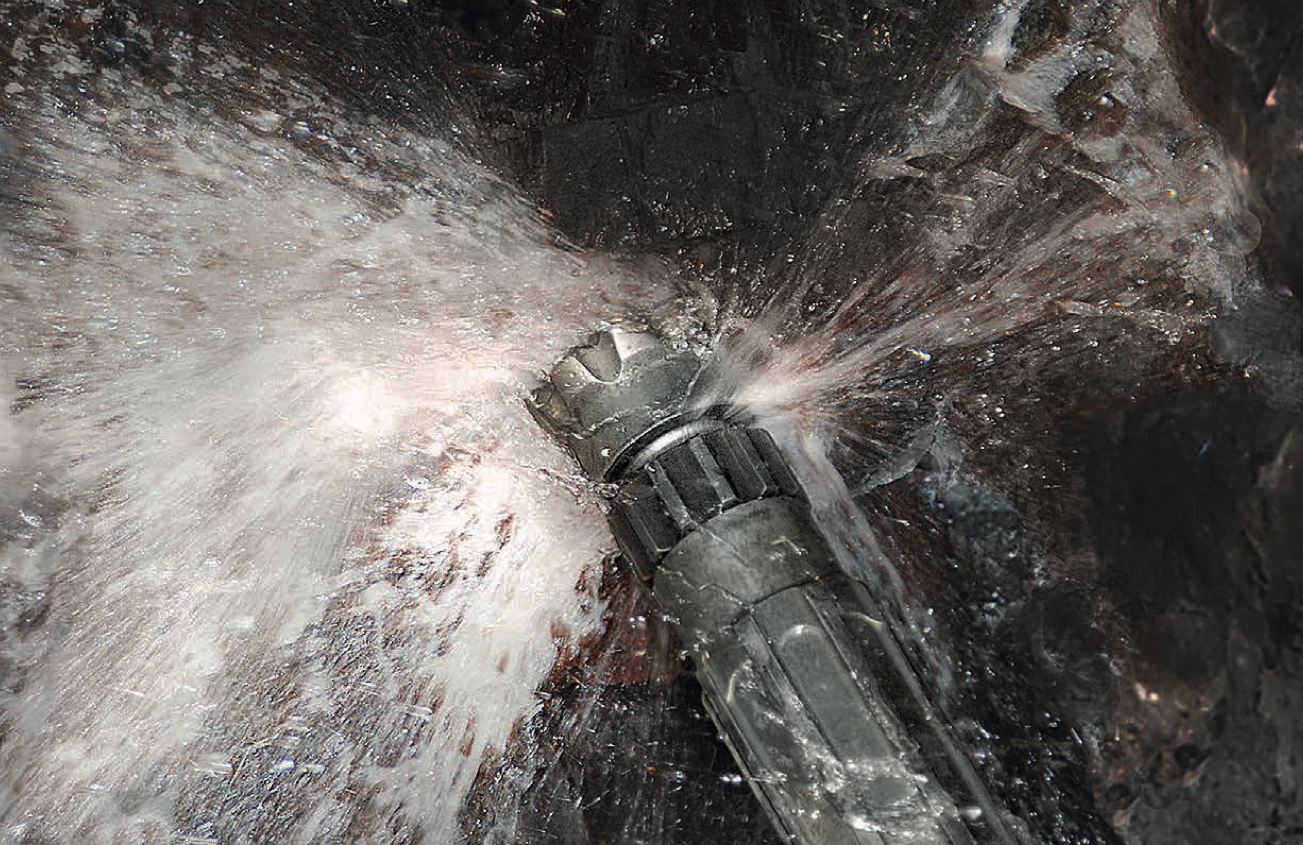LKAB Wassara's high accuracy drilling method is both safer and more productive when drilling long hole rises, a factor that significantly improves the success rate of the holes.

Long hole rises are very useful for creating the initial void to blast into. One of the key factors of a successful long hole rise is the parallel holes.
The hole spacing is usually very tight, as low as 20 centimeters between the holes, and there is a severe risk that deviated holes will intersect other holes and interfere with the blast sequence, causing an unsuccessful blast.
Because this application requires such high accuracy, using Wassara-hammers is the ideal drilling method.
Since the water reverts to hydrostatic pressure as it leaves the hammer, a Wassara-hammer does not pressurize the formation. This is beneficial when blasting holes in proximity. If air-DTH hammers are used, there is a considerable risk that the compressed air will pressurize and extend any existing cracks between the holes as it leaves the hammer. As a consequence, explosives might enter the cracks and open voids and connect the charged holes. This will lead to an interrupted blast sequence that is likely to make the overall blast unsuccessful, resulting in a freezed long hole rise.
Long hole rises are the most effective method of performing opening slots, and the best way to do this is with Wassara’s water-powered hammers. Compared to air leg rises, long hole rises are much safer and more productive, and compared to box hole rigs, the capital cost is much lower since an additional drill rig is not required,